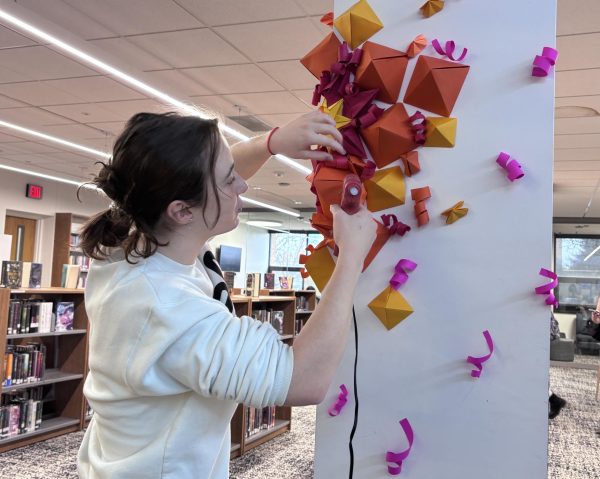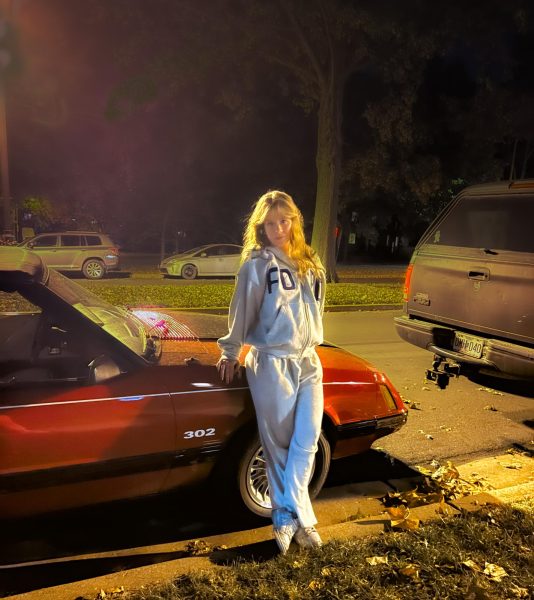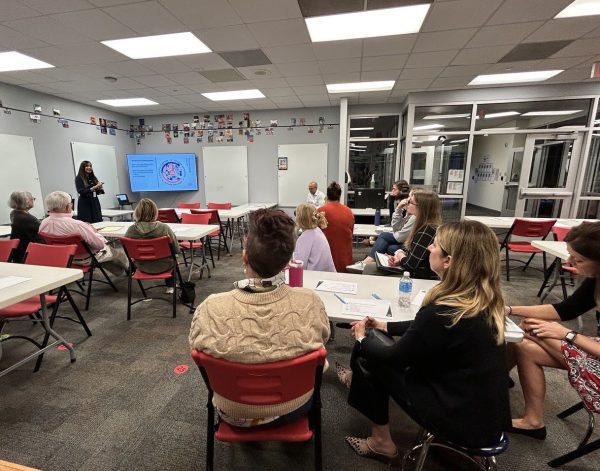Lacing; Know What You Take
“It’s time for teens to learn, learn the facts and also be supportive of each other too,” Doctor Kanika Cunningham says. *Names changed for anonymity
In a friend’s basement, a group of teenagers have just bought two illegal marijuana cartridges from a local drug dealer. All but one proceed to smoke the cartridges.
“It was terrifying, we were just sitting in my basement, and all of a sudden she [Jackie*] just started saying that the energy was wrong, and then she looked at me and said ‘It’s Emily, it’s the thing that replaced Emily’,” CHS student Emily* said. Jackie had smoked a cartridge laced with ecstasy. This unexpected drug induced hallucination that caused Jackie to think her friend sitting in front of her was not her actual friend but something else.
Emily later that night said, “Afterwards she said it was all a joke but at that moment it was so scary because I didn’t know what to do, I couldn’t do anything.”
Day after day, people all over the country, and within the community of Clayton High School, take recreational drugs. Whether they take these drugs illegally or legally, they have an assumption of safety in the things they take.
However, because marijuana is not federally recognized as a legal substance, the assumption of safety can leave young people in a dangerous situation.
Consumers have an expectation of safety in the milk they buy, and the FDA has regulations in place to ensure that the milk bought in stores is safe to consume; those who purchase goods from legal dispensaries make that same assumption. They make that assumption safely, each dispensary in Missouri goes through rigorous testing and tracking to make sure that no products are contaminated.
“The only reason people lace things is so that they keep buying it. They put more addictive drugs in there,” Jackie said.
Lacing is the practice of adding drugs to food, drink, or other drugs. Some of the most well-known drugs that are laced are opioids. Commonly drug dealers will lace the opioids themselves with Fentanyl. Fentanyl is not found in weed since that would cost the dealer more, but it can be laced with opioids, cocaine, and other harder drugs.
Fentanyl is used as a pain reliever for severe or chronic pain. It is similar to morphine except it is 100 times more potent. A lethal dose of Fentanyl is considered to be 2 milligrams but this can fluctuate.
The Fentanyl found in most opioids is manufactured in Mexico where it is then brought across the border to be sold in the US. Drug dealers lace opioids with Fentanyl so that it supposedly improves the high. Lacing can also bring the price down, substituting a pure drug for something that has been diluted or mixed with a cheaper drug lowers the price for the dealer. With such a small lethal amount, lacing treads a thin line between a common high and death.
Missouri has strict regulations regarding tracing the weed ‘from seed to sale’. Metrc is the licensed provider of Marijuana in the state of Missouri and in 16 other states.
Metrc tracks every step of the supply chain using radio frequency identification. But can this technology fail? During February and March of 2022, Metrc would go down for hours, or have breaks in their service. During these breaks the supply chain would go down for hours at a time. Since those breaks, Metrc has promised that their services will be more consistent. But, when people purchase from drug dealers or unlicensed dispensaries they run the risk of the drugs being laced.
Currently in Missouri weed is only legalized for medical use and for those with any chronic, terminal, debilitating illness, or other medical conditions. There are only six states where marijuana is fully illegal even in those six states two of them (Kansas and North Carolina) have decriminalized weed. Federally, weed is still illegal but states can decriminalize charges of possession of weed, legalize medical use, or legalize weed completely. Missouri is set to have legalizing marijuana on the ballot on November 2nd.
“Legalizing marijuana, not only will it help states financially, of course, but I think from a community perspective, a harm reduction and a public health approach. … There’s a lot of people that really use it, for emotional needs or for chronic pain. But I think if it can be legally regulated, it can also reduce some of the harms that can go along with using illegal marijuana,” says Dr. Kanika Cunningham Associate Medical Director at Family Care Health Center.
“I think that if something is legalized there is a lot less of a chance of people going to more sketchy places to get drugs,” Jackie said. Legalization has been described as a method of harm reduction. Allowing customers to buy weed legally can create substance abuse but it lets consumers safely buy weed.
Harm reduction is viewed in many different ways. Some feel that it causes more harm than good but the founders of this ideology believe that they are doing good. The idea is to help educate and prevent future negative experiences surrounding drug usage. They believe in approaching drugs as a multi-faceted issue.
“Everyone likes wanting to be older and acting older and in most cases, drugs are used as a way for people to be older in a sense. Even though it can get really bad and it shouldn’t be glamorized,” CHS sophomore Pauline* said. Some teens feel that they are treated like children so to be treated as an adult they use harmful or dangerous drugs. With the spotlight put on drug usage, teenagers are able to see both the positives and negatives of drugs.
“It’s time for teens to learn, learn the facts and also be supportive of each other too,” Cunningham said. Education is another example of harm reduction. Properly educating both teens and adults regarding substances and substance abuse. Education can assist with confidence in how to correctly approach difficult situations regarding illegal substances.
In situations as complicated as drug usage it’s important to know how to handle situations where things go wrong.
“Cause you’re so worried about making it worse for them that all you can do is panic. Like what could you do? Make them puke up the weed?” said Emily
If someone has been laced or is overdosing contact emergency medical help. The good samaritan law will protect whoever calls 911 and the person experiencing the medical emergency. Doctors cannot disclose information regarding what their patient has taken so if asked, tell exactly what the person has taken whether legal or illegal. If doctors know what drugs the patient has taken they will be able to properly handle the situation.
Lacing and the issues within the general topic of drug use are not detached from the student body of Clayton high school. Before using any drugs whether legal or illegal, recreationally or medically, teenagers must do research about how the drug will affect them and the risks associated with taking it.
A $50 or more donation includes a subscription to the Clayton High School Globe 2024-2025 print news magazine.
We will mail a copy of our issues to the recipients of your choice.
Your donation helps preserve the tangible experience of print journalism, ensuring that student voices reach our community and that student democracy thrives.

Tessa is a sophomore at CHS. It is her first year on the globe. With an interest in literature she is excited to explore new avenues of writing.






